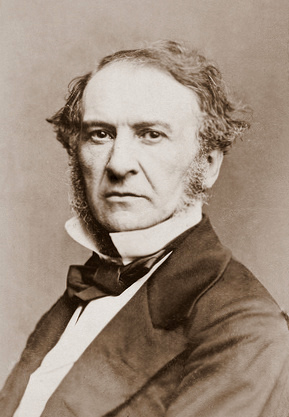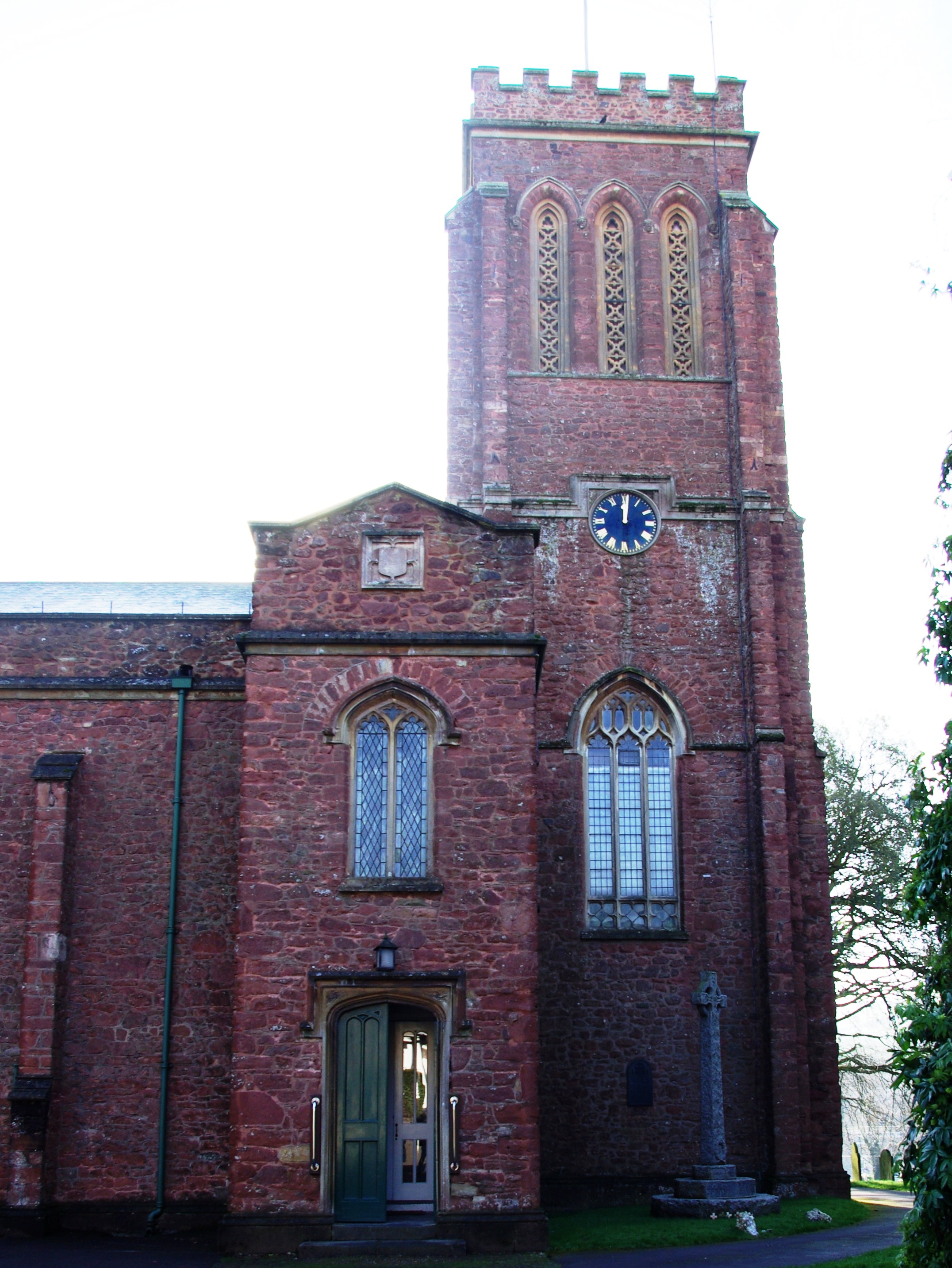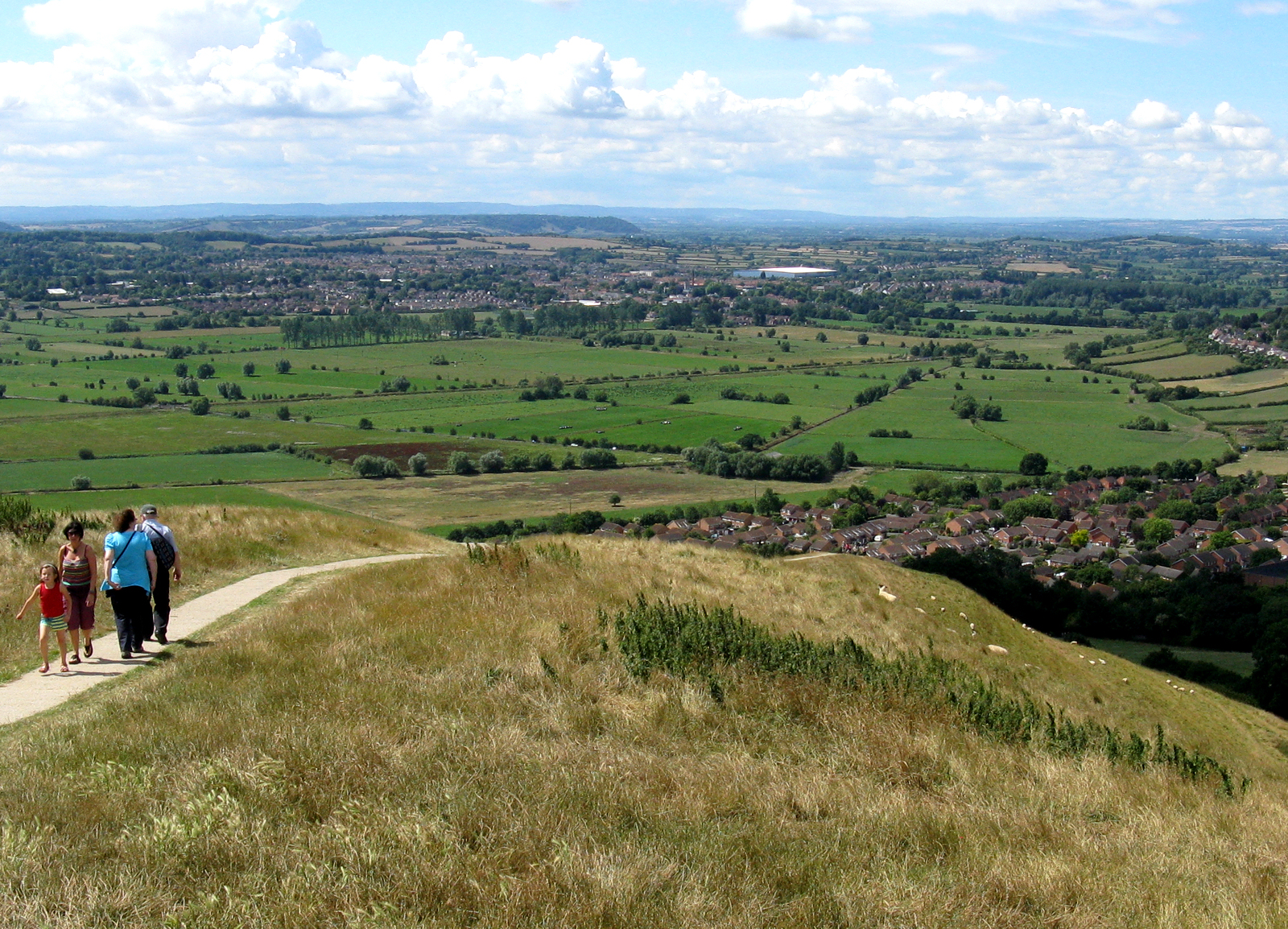|
West Somerset (UK Parliament Constituency)
West Somerset or Somerset Western (formally The Western division of Somerset) was the name of a parliamentary constituency in the county of Somerset between 1832 and 1885. It returned two Members of Parliament to the House of Commons of the Parliament of the United Kingdom, elected by the bloc vote system. Boundaries 1832–1868 1832–1868: The Hundreds of Abdick and Bulstone, Andersfield, Cannington, Carhampton, Crewkerne, North Curry, Houndsborough, Berwick and Coker, Huntspill and Puriton, Kingsbury East, Kingsbury West, Martock, Milverton, North Petherton, South Petherton, Pitney, Somerton, Stone, Taunton and Taunton Dean, Tintinhull, Whitley, and Williton and Freemanors. The constituency was created for the 1832 general election, when the former Somerset constituency was divided into new East and West divisions. It also absorbed the voters from the abolished boroughs of Ilchester and Minehead. The constituency might have been better described as South-Western Somerset, ... [...More Info...] [...Related Items...] OR: [Wikipedia] [Google] [Baidu] |
Wellington (Somerset) (UK Parliament Constituency)
Wellington (Somerset) is a former county constituency in the United Kingdom, formally known as The Western or Wellington Division of Somerset. It returned one Member of Parliament (MP) to the House of Commons of the Parliament of the United Kingdom, elected by the first past the post voting system, from 1885 until 1918. History Creation The constituency was created by the Redistribution of Seats Act 1885, and elected its first MP at the 1885 general election. It consisted of part of the previous West Somerset division, a two-member constituency which had existed between 1867 and 1885. Boundaries The constituency consisted of the western end of the county of Somerset, stretching to the suburbs of Taunton Taunton () is the county town of Somerset, England, with a 2011 population of 69,570. Its thousand-year history includes a 10th-century monastic foundation, Taunton Castle, which later became a priory. The Normans built a castle owned by the ..., and was predominantly ... [...More Info...] [...Related Items...] OR: [Wikipedia] [Google] [Baidu] |
Bridgwater
Bridgwater is a large historic market town and civil parish in Somerset, England. Its population currently stands at around 41,276 as of 2022. Bridgwater is at the edge of the Somerset Levels, in level and well-wooded country. The town lies along both sides of the River Parrett; it has been a major inland port and trading centre since the industrial revolution. Most of its industrial bases still stand today. Its larger neighbour, Taunton, is linked to Bridgwater via a canal, the M5 motorway and the GWR railway line. Historically, the town had a politically radical tendency. The Battle of Sedgemoor, where the Monmouth Rebellion was finally crushed in 1685, was fought nearby. Notable buildings include the Church of St Mary and Blake Museum, which is a largely restored house in Blake Street and was the birthplace of Admiral Blake in 1598. The town has an arts centre and plays host to the annual Bridgwater Guy Fawkes Carnival. Etymology It is thought that the town was original ... [...More Info...] [...Related Items...] OR: [Wikipedia] [Google] [Baidu] |
Edward Ayshford Sanford
Edward Ayshford Sanford, FRS (23 May 1794 – 1 December 1871) was a British Member of Parliament. He was the only son of William Ayshford Sanford of Nynehead and Lynton, Devon and educated at Eton College (1808–13) and Brasenose College, Oxford. He lived at Nynehead Court, Wellington, Somerset. Sanford was elected Member of Parliament for Somerset in 1830, sitting until 1832, and then represented Somerset West from 1832 to 1841. He was a Justice of the Peace (JP) and Deputy Lieutenant for Somerset, serving as High Sheriff of Somerset for 1848–49. In 1832 he was elected a Fellow of the Royal Society. He died in 1871, leaving his estates to his eldest son, William Ayshford Sanford. He had married twice: firstly Henrietta, the daughter of Sir William Langham, 8th Baronet, of Cottesbrooke, Northamptonshire, with whom he had 5 sons (2 of whom predeceased him) and 2 daughters and secondly Lady Caroline Anna Stanhope, the daughter of Charles Stanhope, 3rd Earl of Harrington. His ... [...More Info...] [...Related Items...] OR: [Wikipedia] [Google] [Baidu] |
Mid Somerset (UK Parliament Constituency)
Mid Somerset was a parliamentary constituency in the county of Somerset, which returned two Members of Parliament (MPs) to the House of Commons of the Parliament of the United Kingdom, elected by the bloc vote system. It was created for the 1868 general election, and abolished for the 1885 general election, when Somerset was divided into several new single-member constituencies: Bridgwater, Frome, East Somerset, North Somerset, South Somerset, Wellington Wellington ( mi, Te Whanganui-a-Tara or ) is the capital city of New Zealand. It is located at the south-western tip of the North Island, between Cook Strait and the Remutaka Range. Wellington is the second-largest city in New Zealand by ... and Wells. Members of Parliament Election results Elections in the 1860s Elections in the 1870s Neville-Grenville resigned, causing a by-election. Elections in the 1880s Gore-Langton resigned, causing a by-election. References Pa ... [...More Info...] [...Related Items...] OR: [Wikipedia] [Google] [Baidu] |
1868 United Kingdom General Election
The 1868 United Kingdom general election was the first after passage of the Reform Act 1867, which enfranchised many male householders, thus greatly increasing the number of men who could vote in elections in the United Kingdom. It was the first election held in the United Kingdom in which more than a million votes were cast; nearly triple the number of votes were cast compared to the previous election of 1865. The result saw the Liberals, led by William Gladstone, again increase their majority over Benjamin Disraeli's Conservatives ( see 1865 election) to more than 100 seats. This was the last general election at which all the seats were taken by only the two leading parties, although the parties at the time were loose coalitions and party affiliation was not listed on registration papers. Results Voting summary Seats summary Regional results Great Britain =England= =Scotland= =Wales= Ireland Universities See also * List of MPs elected in the 18 ... [...More Info...] [...Related Items...] OR: [Wikipedia] [Google] [Baidu] |
Second Reform Act
The Representation of the People Act 1867, 30 & 31 Vict. c. 102 (known as the Reform Act 1867 or the Second Reform Act) was a piece of British legislation that enfranchised part of the urban male working class in England and Wales for the first time. It took effect in stages over the next two years, culminating in full commencement on 1 January 1869. Before the Act, only one million of the seven million adult men in England and Wales could vote; the Act immediately doubled that number. Further, by the end of 1868 all male heads of household could vote, having abolished the widespread mechanism of the deemed rentpayer or ratepayer being a superior lessor or landlord who would act as middleman for those monies paid ("compounding"). The Act introduced a near-negligible redistribution of seats, far short of the urbanisation and population growth since 1832. The overall intent was to help the Conservative Party, Benjamin Disraeli expecting a reward for his sudden and sweeping back ... [...More Info...] [...Related Items...] OR: [Wikipedia] [Google] [Baidu] |
Wiveliscombe
Wiveliscombe (, ) is a small town and civil parish in Somerset, England, situated west of Taunton in the Somerset West and Taunton district. The town has a population of 2,893. The Square, fronted by several listed structures, held the former market. The parish includes the nearby hamlet of Maundown. History Settlement in the neighbourhood is of long standing. The Neolithic hillfort at King's Castle is east of the town. North west of the town is Clatworthy Camp, an Iron Age hillfort. Nearby is Elworthy Barrows, an unfinished Iron Age hillfort, rather than Bronze Age barrows. A rectangular enclosure south of Manor Farm is the remains of a Roman fort; in the 18th century, vestiges of its fortifications and foundations were identified as being of Roman origin, and it was locally called "the Castle". In the 18th century a hoard of about 1600 Roman coins of third and fourth century dates was uncovered. The Anglo-Saxon settlement, the ''combe'' or valley of a certain Wifele, was m ... [...More Info...] [...Related Items...] OR: [Wikipedia] [Google] [Baidu] |
Watchet
Watchet is a harbour town, civil parish and electoral ward in the county of Somerset, England, with a population in 2011 of 3,785. It is situated west of Bridgwater, north-west of Taunton, and east of Minehead. The town lies at the mouth of the Washford River on Bridgwater Bay, part of the Bristol Channel, and on the edge of Exmoor National Park. The original settlement may have been at the Iron Age fort, Daw's Castle. It then moved to the mouth of the river and a small harbour developed, named by the celts as ''Gwo Coed'' meaning "under the wood". After the Saxon conquest of the area the town developed, becoming known as Weced or Waeced, and was attacked by Vikings in the 10th century. Trade using the harbour gradually grew, despite damage during several severe storms, with import and exports of goods including those from Wansbrough Paper Mill until the 19th century when it increased with the export of iron ore, brought from the Brendon Hills via the West Somerset Mineral Ra ... [...More Info...] [...Related Items...] OR: [Wikipedia] [Google] [Baidu] |
Street, Somerset
Street is a large village and civil parish in Somerset, England, with a population of 11,805 in 2011. On a dry spot in the Somerset Levels, at the end of the Polden Hills, it is south-west of Glastonbury. There is evidence of Roman occupation. Much of the history of the village is dominated by Glastonbury Abbey, and a 12th-century causeway from Glastonbury built to transport local Blue Lias stone to it. The Society of Friends was established there by the mid-17th century. One Quaker family, the Clarks, started a business in sheepskin rugs, woollen slippers and, later, boots and shoes. This became C&J Clark which still has its headquarters in Street. In 1993, redundant factory buildings were converted to form Clarks Village, the first purpose-built factory outlet in the United Kingdom. The Shoe Museum provides information about the history of Clarks and footwear manufacture in general. The Clark family's former mansion and its estate at the edge of the village are now owned ... [...More Info...] [...Related Items...] OR: [Wikipedia] [Google] [Baidu] |
Ilminster
Ilminster is a minster town and civil parish in the South Somerset district of Somerset, England, with a population of 5,808. Bypassed in 1988, the town now lies just east of the junction of the A303 (London to Exeter) and the A358 (Taunton to Chard and Axminster). The parish includes the hamlet of Sea. History Ilminster is mentioned in documents dating from 725 and in a Charter granted to Muchelney Abbey ( to the north) by Æthelred the Unready in 995. Ilminster is also mentioned in ''Domesday Book'' (1086) as Ileminstre meaning 'The church on the River Isle' from the Old English ysle and mynster. By this period Ilminster was a flourishing community and was granted the right to hold a weekly market, which it still does. Ilminster was part of the hundred of Abdick and Bulstone. In 1645 during the English Civil War Ilminster was the scene of a skirmish between parliamentary troops under Edward Massie and Royalist forces under Lord Goring who fought for control of the bridge ... [...More Info...] [...Related Items...] OR: [Wikipedia] [Google] [Baidu] |
Wellington, Somerset
Wellington is a market town in rural Somerset, a county in the west of England, situated south west of Taunton in the Somerset West and Taunton district, near the border with Devon, which runs along the Blackdown Hills to the south of the town. The town has a population of 14,549, which includes the residents of the parish of Wellington Without, and the villages of Tone and Tonedale. Known as ''Weolingtun'' in the Anglo-Saxon period, its name had changed to ''Walintone'' by the time of the Domesday Book of 1086. Wellington became a town under a royal charter of 1215 and during the Middle Ages it grew as a centre for trade on the road from Bristol to Exeter. Major rebuilding took place following a fire in the town in 1731, after which it became a centre for cloth-making. It is possible that the fire referred to here was actually in Tiverton, Devon which has details of a major fire in the same year. Further information on a major fire in Wellington at this time cannot be foun ... [...More Info...] [...Related Items...] OR: [Wikipedia] [Google] [Baidu] |
Minehead
Minehead is a coastal town and civil parish in Somerset, England. It lies on the south bank of the Bristol Channel, north-west of the county town of Taunton, from the boundary with the county of Devon and in proximity of the Exmoor National Park. The parish of Minehead has a population of approximately 11,981, making it the most populous town in the western part of the Somerset West and Taunton local government district, which in turn, is the worst area in the country for social mobility. This figure includes Alcombe and Woodcombe, suburban villages which have been subsumed into Minehead. There is evidence of human occupation in the area since the Bronze and Iron Ages. Before the Norman conquest, it was held by Ælfgar, Earl of Mercia and after it by William de Moyon and his descendants, who administered the area from Dunster Castle, which was later sold to Sir George Luttrell and his family. There was a small port at Minehead by 1380, which grew into a major trading centre d ... [...More Info...] [...Related Items...] OR: [Wikipedia] [Google] [Baidu] |








_(cropped).jpg)